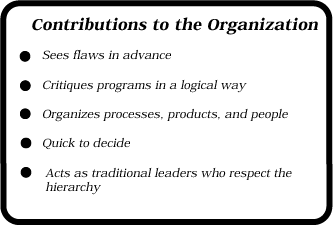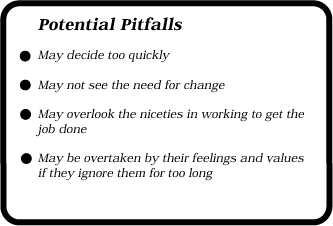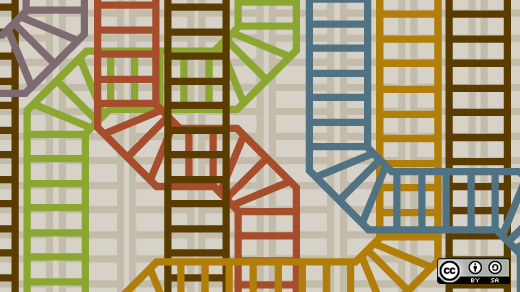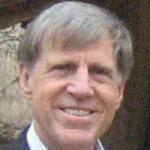Ray Dalio is a billionaire investor, hedge fund manager, founder of investment firm Bridgewater Associates, philanthropist—and, as of January 2018, one of the world's 100 wealthiest people, according to Bloomberg. He's also the author of the book Principles: Life and Work, which debuted last year.
Principles describes how Dalio's organization transforms wishes, desires, and goals into tasks, actions, behaviors, and execution through algorithms (what Dalio calls "management tools"). Dalio is a strong proponent of what he calls "believability weighted decision-making," which stresses evaluating factors and opinions that most influence a given issue and understanding who might have a strong background (or weak background) on the subject.
In effect, it's a system for implementing meritocracy—which makes it particularly interesting to open organization practitioners and advocates.
Reading Principles from an open organization perspective is a valuable exercise, and in a two-part review of the book, I'll explain why. In this installment specifically, I'll offer an overview of the "believability weighted decision-making concept," and present Ray Dalio's thoughts on exposing our strengths and weaknesses in decision-making situations. (I'll save a more detailed explanation of Bridgewater Associates' system for moving from good intentions and desires to actions, using algorithms, for the next article.)
A meritocracy of ideas
In meritocracies, "best ideas" get adopted. According to Dalio, "idea meritocracy" is the result of "radical truth" plus "radical transparency" plus "weighted decision-making."
Here is his definition of each:
- Radical truth: Not filtering one's thoughts and one's questions in ways that lead to biased information, and being completely open to incoming information
- Radical transparency: Giving everyone the ability to see everything about a given issue being decided upon
- Weighted decision making: Making decisions based on unbiased, balanced, and in-depth information and data (according to Ray Dalio, "weighted" means the idea is based on the most believable data and information available at the time).
And here are Dalio's rules for idea meritocracy:
- Select the right people that will generate the best ideas.
- Get agreement that all will accept the group's final decision and judgment.
- Select certain members to enforce the final agreement.
For Dalio, "best ideas" take shape according to a concrete and repeatable process. It involves:
- Build an environment for learning and acquiring knowledge.
- Gather independent thinking people.
- Create an environment that allows for all ideas to be presented, exposed, discussed, and agreed upon.
- Determine if this agreement is a one-time issue or a continuing issue which should be systematized into execution principles and behaviors.
- If systemization is desired, begin success and failure prototype testing.
- After repeated trials, determine the best systematized process, then regularly review and update.
In Principles, Dalio explains how he and others at Bridgewater Associates have implemented these processes.
A book in two parts
Principles consists of two parts: "Life Principles" and "Work Principles." Life Principles presents Ray Dalio's history, and here I learned that he's from my generation (he graduated high school the same year I did). The same factors and forces he remembers influencing him were the same ones that influenced me.
Most of the book, however, consists of Work Principles. I'll cover those here.
Evaluating strengths and weaknesses
Bridgewater Associates uses the Myers-Briggs Type Indicator (MBTI) system (which I wrote about in an earlier article). All Bridgewater members know each other's preferences and non-preferences. Clearly, the belief is that having the right community environment will ensure that all members can admit where their non-preferences are (their weaknesses or blind spots), and other members can support them without resistance. For example, in 2006 Dalio took the MBTI and learned that "intuiting people" tended to look at big-picture concepts while "sensing people" were more interested in details. At the time, Bridgewater was having conflicts and disagreements in just that area. MBTI understanding helped solve those disagreements.
For example, let's take a look at my own Myers-Briggs preferences (in Figure 1, below). I'm an "ESTJ" (Extraversion [E] to Introversion [I], Sensing [S] to iNtuition [N], Thinking [T] to Feeling [F] and Judging [J] to Perceiving [P]). ESTJs like me are logical, analytical, decisive, and tough-minded; they're able to organize facts and operations well in advance. Here are some things a group should think about when working with me.


Figure 1 (courtesy of Ron McFarland)
Can you image how helpful this information would be if an entire team or organization was aware of it? I tend to be extreme when it comes to "Judging" (J) and "Perceiving" (P), and I often need help with not making decisions too quickly, particularly when not enough information is available. A team aware of my personality type could coach me on slowing down and spending more time in information gathering and analyzing. "Perceiving" people who are better at non-judgmental information gathering could be especially helpful in this regard.
Critiquing bosses' comments
A willingness to expose and address our weaknesses must be a 360-degree attitude. Management must also be involved. Dalio thinks staff should have the right—even the responsibility—to criticize their boss if they're not comfortable with his or her behavior.
Bosses shouldn't singly override a decision unless they have strong reasons and can convince all parties they were forced to act alone. Anyone can criticize a boss with supporting data. Also, a boss must be willing to expose his or her own weaknesses. Creating this environment is important, Dalio says.
Education and training
Bridgewater records virtually all meetings. This way, they can create case studies to learn from later (they simply have a meeting, review the recording of the meeting, and see what they can improve on). Then they role-play the meeting again with improvements added. They record that one, too. Then they play back that recording, see the improvements, and locate even more ways to make it better.
Education is providing knowledge—but this kind of training is building skills through repetition and reviewing the same activity until it rises to the desired level. Dalio calls this "experimental learning by exposing weaknesses."
Believability weighted decision-making
After many of the truck sales seminars that I gave throughout my career, I asked the participants to complete a little survey on reasons why customers were buying our trucks. In the room were professional sales people with 10 years of experience or more, salesmen with five to ten years of experience, salesmen with one to four years of experience, and salesmen with less than a single year of experience. I'd weight my survey results, giving four times the value to salesmen with 10 years' experience or above, then three times, two times, and one time.
I see a similar approach to gathering data at Bridgewater. As a hedge fund company, it recommends investments for its clients—and it uses a "believability weighted decision-making" analysis for determining those investments. The company's innovation, Dalio argues, is its application of this process to decision-making and management. When making decisions, Dalio argues, we must determine (and find agreement on) how much weight each member and each influencing factor should carry.
For decision-making meetings, Dalio says, all people and information should be "believability weighted." He says to ask which of these three types of people are in the meeting:
- "Teachers," who should be making statements most and asking confirmation questions
- "Students," who should be mostly asking questions and occasionally giving comments
- "Peers," who give comments on some well understood issues and ask questions on topics that are not well understood
Which are you? Which is everyone else? Bridgewater has tools to evaluate that which I will introduce in the next part of this article.
Future self and environment development
Dan Ariely, the famous behavioral economist, says we are two people: A "current self," with all our goals and ambitions, and a "future self" that occasionally behaves counter to those goals because of a surrounding or environmental change in the future. Consider deciding to exercise one evening with the goal of getting in shape (current) and being sleepy and not wanting to get up the next morning (future). The current-self sets goals, but the future-self fails to behave to achieve the goals. The current environment is different, and the current self's mental attitude is different from the environment and mental attitude in the future. So when setting goals, the future environment must be managed (with, for example, alarm clocks, electronic messaging from daily planners, and other triggering systems).
To assist with transparency and adaptability, Bridgewater Associates records all meetings (as I mentioned above). People review some meetings with questions like:
- What was covered?
- Were the right questions asked?
- Did everyone have a chance to speak?
- Was there a decision made?
- Who are the most energetic members that have the strongest desire to achieve something?
- Who are less interested?
The purpose is to learn and improve. A "current self" (who's sitting in the meeting) can't see what is happening while it's happening. The "future self" reviewing the meeting, however, sees a very different perspective and can learn from it.
Dalio says organizations should allow people to admit that they can't do what they thought they could do and to ask for help quickly. Delayed projects are often the result of some person, some team, or even some company refusing to come out and say they can't do the assignment and need either to get help or to give the project to someone else. The faster an organization can expose this weakness through transparency, the more efficiently it will be able to complete projects.
Group size and composition
Group size is an important environmental consideration. Dalio believes that two people who collaborate well will be more than three times as effective as the two of them operating independently, because each will see what the other might miss—plus, they can leverage one another's strengths.
He thinks that three to five people are best. Smart, conceptual people seeking the right answers in an open-minded way will generally lead to the best answers. It may be tempting to gather a larger group, but having too many people collaborating is counterproductive, Dalio says, unless specific talent, experience and skills are required.
One's reputation, knowledge, and experience with a given topic are all factors decision-makers should consider in meetings—but none of these should intimidate the entire group. The person with a reputation for possessing all these things must be humble and open-minded as well. (Incidentally, I've written about open- and closed-minded colleagues in a previous article.)
One's ability and desire to be humble and open-minded (that is, one's willingness to ask confirming questions and admit a lack of knowledge on specific aspects of the subject) is equally important. According to Dalio, each of us must evaluate ourselves and others on both these factors for every issue or subject during a meeting. He's sketched a chart to demonstrate the perfect balance between prior knowledge and open-mindedness (see Figure 2).

Figure 2 (from Principles, p. 181)
Where would you locate yourself on this table when you attend meetings on various issues? Would others agree with you? Who knows, the quiet, least experienced but most independent thinking young person in the back of the room might have a perspective and knowledge that no one else considered. The group must be open to hearing from that person, too.
According to Dalio, the most open-minded people tend to:
- Understand that everyone has blind spots, but that they can be different from person to person, and want to consult with people who have different blinds spots than they do.
- Try to explore other points of view.
- Believe they might not know the best possible path.
- Recognize that there are two steps to decision-making, gathering information and deciding, understand how to negotiate the two (spending more time gathering information might be necessary; however, only gathering information and not deciding could be a concern too).
- Remind themselves that they're looking for the best answer, not just a preferred answer (that is, they try to get everyone in a group to move to a higher-level perspective so they can gaze down more critically at all the members' positions).
- Ask, when arguing, whether they're arguing to understand or just to be understood.
- They speak with experts individually; then, they get all the experts together and let them support their positions.
People that are more closed-minded, Dalio says:
- Don't want their ideas challenged.
- Like to make statements but don't like asking questions.
- Focus more on being understood than understanding others.
- They try to convince people by saying "I might be wrong, but here's my opinion" (if they follow up with a question, this sentence is understandable; if they discourage questions, comments, or criticism, they're more closed-minded).
- Try to block others from speaking and dominate the conversation.
- Have difficulty seeing two positions at the same time (theirs and others').
In the next part of my review, I'll discuss how Bridgewater systematizes its decision-making process using algorithms.
Subscribe to our weekly newsletter to learn more about open organizations.






2 Comments